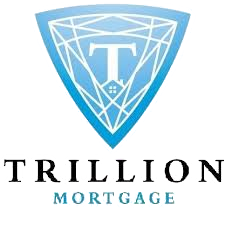Mortgage Rates
The interest rate you pay on your home mortgage is one of the most important factors of your home mortgage. The greater the interest rate, the more you will pay for your home over the lifetime of the loan. Many wonder what drives mortgage rates, and why they change on a daily, and sometimes an hourly basis. You may want insight on when to lock your interest rate, and assistance on determining what style of mortgage is right for you. Your options include fixed, adjustable, line of credit and hybrid loans that offer a fixed rate for certain period of time, such as 5 or 7 years before the interest rate starts to adjust.
Reach out to us to check on today’s rates for loans.
Fixed Rate
The most common type of mortgage for consumers is a fixed rate mortgage. The fixed rate means that the interest rate remains the same for the lifetime of the loan. Most consumers feel safer knowing what their mortgage payment will be each month- the fixed rate mortgage provides this comfort. Additionally, current market forces have fixed rate mortgages at an all time low- so they are currently a great value as well. Fixed rate mortgages are commonly done in 30 or 15 year terms, though the length of the loan could be 10, 15, 20, 25, 30 or 40 years in length. Generally speaking, the longer the term of the loan the higher the interest rate will be. It is therefore important to evaluate the term and its corresponding interest rate when deciding which mortgage you want.
Line of Credit
A line of credit is a mortgage that enables you to borrow against a credit line much like a credit card, during the lifetime of the loan. Most of these lines are done as second mortgages, but some lines are available as first mortgages as well. Most of these loans have adjustable interest rates tied to them. The reason for this is that the interest rate may be different when you pull funds out down the road than they are today. Many of these loans have an option available to fix in the interest rate on the current outstanding balance of the line of credit.
Adjustable Rate
Adjustable rate mortgages have interest rates that may adjust on a periodic basis. Most adjustable rate mortgages remain fixed for a year at a time, and adjust according to market forces after that time. The interest rate is determined by adding what’s called an index and a margin to calculate the rate. For first mortgage, the most commonly used index is the US 1 year T-Bill. This is the average interest payout of treasury bills for the time period that is used to adjust the mortgage. Other indexes do exist however, the include the LIBOR- the British version of the T-Bill, the Prime lending rate as set by the Federal Reserve Board, and in some cases the Cost Of Funds Index (COFI). These indexes are published by the Wall Street Journal and other financial publications every day. The margin is the additional interest the lender will charge in addition to the index. The margin can vary a great deal, but is commonly set at 2-3% above the index.
The second set of factors that need to be considered is how much the interest rate can adjust, and how often it adjusts. Your Trillion Mortgage loan officer can provide detailed information for you on these terms. Most adjustable rate mortgages have an annual cap placed on them- meaning the rate cannot adjust more than a certain percentage each year (usually 1-2%) and also have a lifetime cap, meaning it can never adjust more than a certain amount over the lifetime of the loan. Discussing these factors with your loan officer is crucial when determining what type of mortgage you should get.

Join Our Newsletter
Enter your email below and get information about rates and news.
